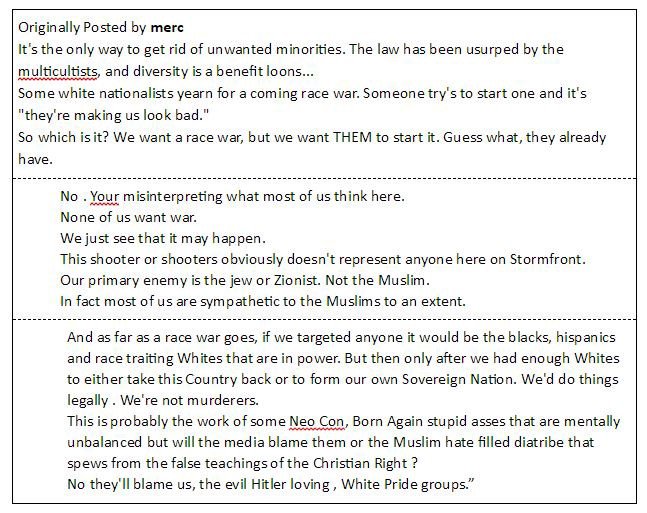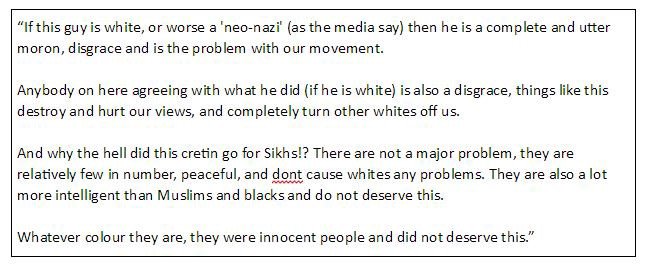Part 2: Jab Eh Gahai Bipran Ki Reet, Main Na Karo In Ki Parteet
In the aftermath of 9/11, there was a flurry of activity among Sikh Americans. An American businessman, Balbir Sodhi, lost his life when an enraged compatriot entered the premises of his business and shot him to death. We needed to tell everyone that we are Sikh Americans. The first Sunday at Gurdwara after 9/11, there were small American flags planted all across the entrance to the Gurdwara. We needed to ward off the evil and our talisman was the red, white, and blue. Some uncles at Gurdwara were even wearing red, white, and blue pughaan. Our kakaar had truly gone through a transformation in the 300+ years since Vaisakhi 1699.
Soon, the Sikh Coalition emerged. Founded by educated Sikh professionals, who were just as committed to their Sikh identity as they were to their professions. In their earliest efforts, they focused on providing solid, researched information that was easy to share and easy to understand. The focus was that the right information and the right narrative should emerge. Educated Sikhs, with their identities intact, took initiative and became the providers of this information. Since they were educated and created the platform, few challenged their authority. This attitude of the right information and the right narrative has not significantly shifted among Sikh activists, as my wife and I were to discover many years later. What is important to note though is that good information did indeed emerge, depending on how strictly one qualifies “good.” In my adolescence, I was not as critical. I proudly knocked on the doors of neighbors surrounding the Gurdwara, sharing the pamphlet of information that the Sikh Coalition had excellently prepared.
At the time, I had just started the journey of immersing myself back into Sikhi, growing my kesh shortly after 9/11. It seemed important that others know about Sikhi, because it was important for me to know about Sikhi. I was projecting my own ignorance and insecurities about my identity onto others. Unsurprisingly, my community was doing the same. No one had asked us who we are. No one had asked what we believe. No one was curious where we came from. At this point, however, Sikhs suffered the consequences of an increase in anti-Muslim sentiment.
When a victim is in crisis, and knows that the likelihood of being hurt or killed is real, the victim begins the process of humanizing him or herself.
As victims, we began humanizing.
“We are Sikhs.” “We are peace loving Americans.”
“We believe in one God.” “Sikhi is monotheistic.”
“Guru Nanak is our prophet.” “Guru Granth is our holy scripture.”
“Sikhs believe in charity and equality.”
In the process of humanizing ourselves, we also unconsciously began Christianizing ourselves. Do not misunderstand me. I am not laying the blame for this on any one individual or Sikh organization. This was and still is a community wide phenomenon. Nevertheless, the truth remains unaltered. The same Sikh educators that were largely upset that Sikhi was being saffronised (Hindu-fied) in India were/are participating in the discourse that Christianizes Sikhi and/or assimilates Sikhi into one interpretation of American culture. In both the saffronisation and Christianization of Sikhi, the authentic Sikh experience is diluted, obfuscated, and ultimately lost.
Is it really a surprise that 16 years after 9/11 we are spending $1 million on a national ad campaign aimed at explaining that Sikh values are American values? The foundation for this activity was laid over the period of more than a decade by most Sikh organizations in the United States. The sponsor for this campaign is also one of the organizations that was founded in the early days of post 9/11 activism.
Often, when a movement is challenged, particularly one that has some level of popular or financial support, certain questions are raised against those with a critical opinion. Who are you to criticize? What have you done for Sikhi? At least they are doing something. Something is better than nothing. Questions and comments that are based on false logic, that are rooted in the motivations of fear.
For those who do not understand the problem with this activity, I will try to explain this as plainly as possible. The problem is not the act of sharing information. The problem is the idea or emotion that lives in the subconscious and gives motive to act.
The premise is: The only way or the best way, to prevent harm to oneself, is by spending an exorbitant amount of money and energy explaining to all of one’s neighbors that one is X, Y, or Z. When an individual acts on this premise, the person is presuming that everyone around him or her is out to get them. This is paranoid behavior. This belief is also a very pessimistic stance to hold. It requires a negative view of life. It means treating everyone as guilty. If everyone was indeed out to get us, we would be dead already.
Yes, a real problem exists of Sikhs being attacked. Yes, something legitimate needs to be done. Nevertheless, presuming that I need to educate literally every American, lest I be killed, is inherently paranoid. Could I target a specific demographic that is harmful to me and let them know that I am a Sikh, so pretty please do not kill me? Sure, but one deludes oneself into believing that simply telling people “I am a Sikh” is going to convince them to not hurt me. In the process of sharing with people that we are Sikhs, we miss the most critical component: what does the person intending to harm me actually care about?
So what keeps motivating this behavior?
Fear.
ਜਉ ਤਉ ਪ੍ਰੇਮ ਖੇਲਣ ਕਾ ਚਾਉ ॥
ਸਿਰੁ ਧਰਿ ਤਲੀ ਗਲੀ ਮੇਰੀ ਆਉ ॥
ਇਤੁ ਮਾਰਗਿ ਪੈਰੁ ਧਰੀਜੈ ॥
ਸਿਰੁ ਦੀਜੈ ਕਾਣਿ ਨ ਕੀਜੈ ॥੨੦॥
If you desire to play the game of love,
With head in palm enter my alley,
When you plant your feet on this path,
Give your head, do not pay attention to others’ opinions/comments (do not be afraid.)
Members of the Sikh community continuing to suffer harm has little to no correlation to how many people know who Sikhs are. How can I know this for a fact? I discovered this fact when the Oak Creek Gurdwara shooting happened.
When the Oak Creek Gurdwara shooting happened, my wife (fiancée at the time) was inside the Brookfield Gurdwara, a mere 30 minutes away; I received a short call from her to inform me of the situation. At that point, Sikhs at the Brookfield Gurdwara knew that a shooter had attacked the Oak Creek Gurdwara and there was a possibility of a second shooter making his way to Brookfield. She was calling to reassure me that the Sangat there was developing a response to deal with the threat, and that some Sikhs were even speeding their way to the Gurdwara, armed to fight and defend.
After the immediate threat subsided, the Sikh community busied itself again with minding others’ opinions about themselves. Forget the love business, let us blissfully operate in fear. The Great Sikh Narrative that is going to save all Sikh lives needed to be shared and Sikh activists made it plenty clear that only they, and not the community, were equipped to save everyone.
I had had enough with the sharing of information and was enraged. I was long distance from my wife and so I was partially enraged that I could not be there to do anything. I was also enraged because I was tired of white supremacist actions against everyone, not just Sikhs.
We are Sikhs. We tell glorious stories about famous battles, and yet a single intruder hurt several members in a Gurdwara. Contrary to popular belief, a Gurdwara does not necessarily function like a Church or a Mandir. The Nishan Sahib that flies overhead a Gurdwara is a flag that indicates the existence of a sanctuary, a place that provides food, shelter, and most importantly, protection. Not spiritual protection from magical oddities, but physical protection from harm.
At the time, I wanted to develop a black panther type militant response to white supremacy. I wanted to let them know we are here, and we are here to stay. That if you attack us, we will destroy you. So, I decided to take the lesson I had learned from Sun Tzu’s Art of War, to know one’s enemy.
“If you know the enemy and know yourself, you need not fear the result of a hundred battles. If you know yourself but not the enemy, for every victory gained you will also suffer a defeat. If you know neither the enemy nor yourself, you will succumb in every battle.” (Sun Tzu, Art of War)
I started researching everything I could about Wade Michael Page. Not just what his motivations were, but more importantly what are the thoughts and opinions of the people he identified with and whose acceptance he sought through his actions. It’s difficult to figure out the thoughts of a dead man. It is far easier to understand and interpret the comments and actions of those living. I found an article that mentioned an organization he was associated with, Volksfront.
After perusing for some time, I found that stormfront.org was a prominent white nationalist website, and was what showed up when I searched Volksfront. This is the forum page that I viewed at that time. Sikhs, please take a minute to read and learn about your enemy’s thoughts.
The following are copied directly from the stormfront.org forum:









Looking at all of these comments, I gained two lessons that day.
1) Many, if not most, of the white nationalist community were already aware that Sikhs are distinct from Muslims, that Sikhs are from Punjab, and although there may be some confusion about core Sikh beliefs, nonetheless they did not have a problem with Sikhs. Yes, the forum was probably being moderated so that the comments appearing were shaped a certain way to tell a particular narrative. However, the most important lesson in this still stands out, that white nationalists DO NOT CARE WHO YOU ARE. THEY DO NOT CARE WHERE YOU’RE FROM. AND THEY DO NOT CARE WHAT YOU BELIEVE. You are not white, in so far as they understand their own whiteness, and that is all that matters.
2) The Great Sikh Narrative that was going to save Sikh lives had already reached its ultimate goal. Already white nationalist members were touting that Sikhs are peace loving people. What more could you want? The best victory that one could hope to achieve in information sharing is not just to reach a single member of the target demographic, but have that member become your advocate within that target demographic. Look at the comments. But guess what? Sikhs are still being attacked. So what exactly had this Great Sikh Narrative achieved then? What does it hope to achieve in the future?
Narratives do not save lives. Narratives are a disease. They insulate oneself from the rest of the world. They are inherently focused on the disease of the self, of the ultimate betrayal of Ik Oankar, the distinction between self and other. I must tell my story so that YOU can understand ME.
As I was going through the stormfront website, while writing this piece, I came to another, even more important realization than the two lessons I had learned that day. Did you notice how often white nationalists were concerned with their image? Their identity? Their narrative? Their portrayal? You know who that reminds me of?
Sikhs.
Reading these comments was like putting a mirror up and realizing that what I was looking at was myself (my community).
I cannot say this any better than my Guru. So, I can only hope that as Sikhs, we will at the very least hear what our Guru has to say:

Is the path that we are following truly unique when it stems from fear? Is the path unique if it directly reflects the fears and insecurities of those who seek to destroy us, or at the very least, our freedoms? The unique path that Guru taught us is Nirbhao and Nirvair.
Hence, reading the white nationalist comments made me realize that my desire for militancy, in response to white supremacist actions, was stemming from a place of anger, which while it is not fear, it is still definitely not a Guru-centered response.
If we seek to truly behave as Sikhs, then there is only one way to behave, and one place to take instruction from: Guru. Do not turn to me for solutions. Do not turn to academics or experts for solutions. Do not turn to grand organizations.
Trust your Guru. Turn to your Guru.
ਮਤਿ ਵਿਚਿ ਰਤਨ ਜਵਾਹਰ ਮਾਣਿਕ ਜੇ ਇਕ ਗੁਰ ਕੀ ਸਿਖ ਸੁਣੀ ॥
Within the mind are gems, jewels and rubies, if you listen to the Guru’s Teachings, even once.




